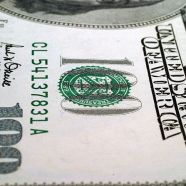 November
12
November
12
USD: The Only Trade in Town
The last four weeks have seen quite the run for Dollar bulls. The Bank of Japan expanded its asset purchase program by about 15% to 80tn Yen per year. The European Central Bank showed it’s solidarity on the aim to expand the balance sheet by 1tn Euros. Commodities continue to drag the respective EM and risky currencies lower. As it currently stands, 62% of Dollar longs are against the EUR. Yen shorts are strangely small relative to how big recent moves have been, showing us that many were caught flat footed by Kuroda’s bazooka shot.
The Dollar has become the only apparent trade out there for the last six weeks or so. The dovish moves by the BoJ and ECB have relieved any pressure on stocks or risky trades and kept bond yields suppressed. The sustained fall in oil prices is also a key factor as global inflation expectations remain near recent lows. Non-farm payrolls came out just below expectations along side stagnant wage growth. This data was seen as reducing pressure on the FOMC to pursue faster and sooner rate hikes.
Market participants are trading in the path of least resistance, a stronger US Dollar. This trend will likely continue until there is new information available that disputes the current stream of data out of the major economies. There are a few things in particular to watch for, these are of equal importance:
1. Pick up in US wage Growth: With a steady flow of 200k pay rolls, the last thing markets are waiting for is a jump in wages. This would be seen as putting much more pressure on the FOMC. The Dollar would likely see a strong rally against emerging markets currencies as risk trades are reevaluted in the face of faster rate hikes.
2. European and Japanese Inflation: The world’s easing spigot is now firmly dependent on the pace of inflation in the Eurozone and Japan. The ECB and BoJ are leading the easing charge, and if inflation is finally stoked in these economies the conversation of reducing stimulus will begin. Given the large short positions in JPY and EUR, any surprise jump in inflation will force traders to cover positions.
3. Further Deterioration in Chinese Data: The frustrating part about the bearish China trade is that you never know what data you can trust. Recent PMIs have teetered around the 50.0 level, while GDP was in line with expectations at 7.3%. The communist party is unlikely to let an obvious and sudden slump show in economic data, so it may make more sense to be on the look out for a surprise default by a property developer, miner, steel firm or small bank.
Recent Comments